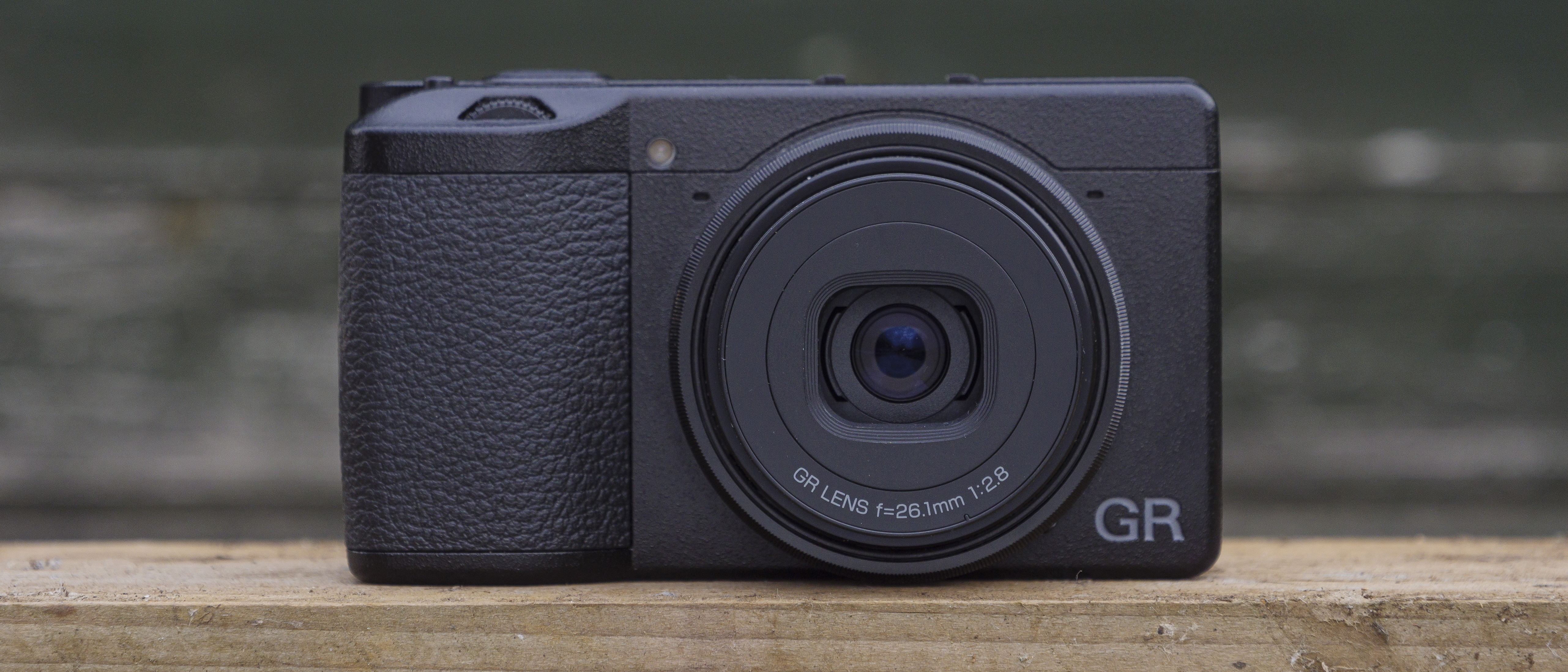TechRadar Verdict
Aside from its new lens, the GR IIIx is largely identical to its two-year-old GR III sibling, for good and for bad. Avid fans of GR cameras love the unparalleled pocketability, quick response, intuitive handling and sharp-looking DNG raws. And now with a new 40mm f/2.8 lens, the GR IIIx is arguably more versatile. Like the GR III, this is a camera you want in your pocket the whole time, and any necessary concessions to keep it this small, such as poor battery life, are forgivable. Still, a tilt-screen would be appreciated.
Pros
- +
Large sensor pocket power
- +
Intuitive handling
- +
Quick start up
- +
Sharp raw DNG stills
Cons
- -
No tilt-screen
- -
Poor battery life
- -
Jittery autofocus
Why you can trust TechRadar
Editor's Note
• Original review date: June 2022
• Adds a 40mm f/2.8 lens to the existing Ricoh GR III
• Launch price: $999 / £899 / AU$1,779
• Official price now: around $1,050 / £999 / AU$1,599
Update: May 2024. Two years after we first reviewed it, we still think the Ricoh GR IIIx is one of the best compact cameras you can buy. Its combination of a large sensor, sharp lens and tidy dimensions continues to impress in 2024. This remains a fantastic shooting tool to keep in your pocket, especially if you’re a street photography fan. Its unique feature set has made the Ricoh GR IIIx a very popular camera, which is why you’ll find most online stores listing it as “out of stock” or “awaiting stock”. That’s also why seasonal discounts on the model are uncommon, with the GR IIIx generally marketed at its full RRP. Both of those factors mean your easiest route to acquiring one at a decent price is to look for second-hand or refurbished options in good condition, which can be found if you look around online.
Two-minute review
The new Ricoh GR IIIx is the latest in a long line of discrete compact cameras that are small enough to slip into your pocket, but somehow boast a large APS-C sensor and a sharp, fixed focal length lens.
The Ricoh GR series has carved out a niche market, being particularly popular with street photographers and everyday snappers who love the camera's quick response, intuitive handling and, more recently, Snap Focus system to capture decisive moments. As a result, they've long been mainstays in our guides to the best compact cameras and the best travel cameras.
Yet one thing that many GR lovers have pined for is a more telephoto focal length than the 28mm f/2.8 lens found in the most recent iteration, the GR III. Well, now their wish has come true in the GR IIIx, a camera that is virtually identical to the GR III in every way, except it has a 40mm f/2.8 equivalent lens.

A 28mm lens is essentially the same focal length as a smartphone's standard camera, making it the most universally familiar focal length, while 40mm is closer to a phone's portrait lens. Another way to appreciate the difference between the two focal lengths is that 28mm represents what you can see, while 40mm is what you focus on.
We'll get more into the practical differences between those two focal lengths in these cameras in our in-depth review. Suffice to say, there are scenarios more suited to the 28mm lens, and others best suited for 40mm. In either case, limiting yourself to a particular focal length can be a useful creative discipline for photographers, though if we could be greedy, we'd like a GR III in one pocket and the GR III X in the other.
Perhaps Ricoh will keep going in the Sigma Quattro approach by adding further models like a 75mm f/2.8, though the GR IIIx does have a useable crop mode taken from the 24.2MP sensor, going up to 71mm. There is also an optional 75mm GT-2 Tele Conversion lens, but adding accessories and bulk to a GR III camera somehow seems sacrilegious – yes, even a flashgun via the hotshoe.
Other than the new lens, it's as you were, for good and for bad. If you're looking to get the most for your money based on a spec sheet, then the GR IIIx is not for you. At $999 / £899 / AU$1,799, it's more than the GR III on release and for that money you could get an APS-C interchangeable lens camera with a lens or two, or a fantastic smartphone.
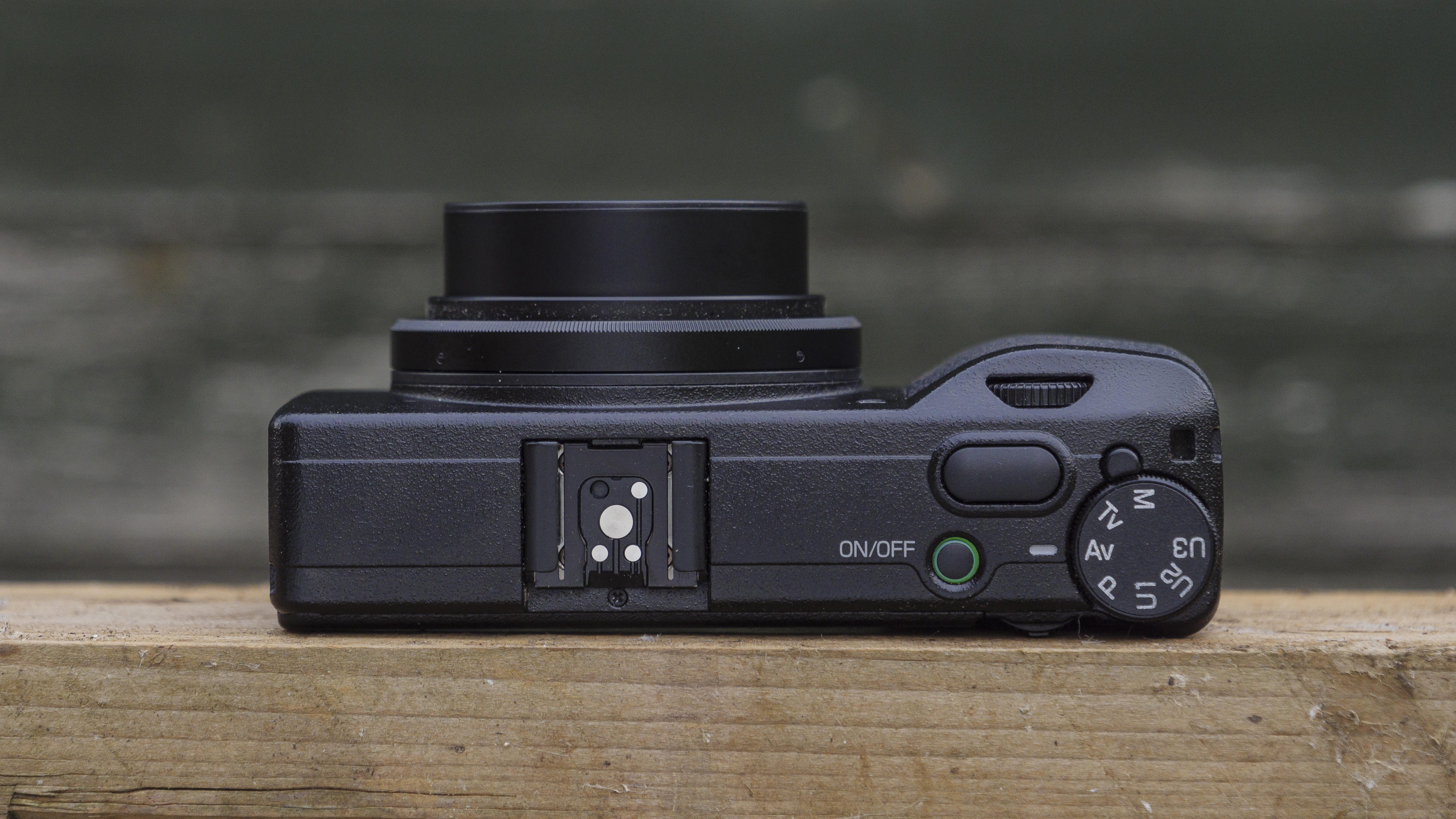
The GR IIIx's battery life is poor. There's also no built-in flash, viewfinder or even an optional EVF via the hotshoe, the rear touchscreen is fixed, video recording is limited to full HD with no mic input, plus AF is jittery. That's a few downsides, so why is the GR IIIx so expensive? Well, there really is no other pocket camera like it today, especially with this new lens – trust us, we've searched hard.
Perhaps its closest rival is the Fujfilm XF10, or various discontinued cameras like the Fujifilm X70 and Nikon Coolpix A, all of which have a 28mm lens. The GR IIIx has more street guile than all of these options, though we'd love a tilt-screen. Other large-sensor compacts like the Fujifilm X100 series or the smallest interchangeable lens cameras with 40mm pancake lens attached are no comparison, being much bigger.
More importantly than features, the GR IIIx is a joy to use. It's a camera that you want to have in your pocket. It seems so intuitive to general quick response photography, and is easy to customize with tools that experienced photographers will love. The in-camera raw editing and seamless wireless connection to a smartphone (in our experience with a Google Pixel) means you can share edited pictures easily on the fly, too.
Throughout our review, we were particularly interested to know how the new 40mm lens affects the handling of this pocket shooter, and if the lens quality is just as good. Read on to find out in our in-depth Ricoh GR IIIx review, and for additional info check out our Ricoh GR III review.
Ricoh GR IIIx release date and price
The Ricoh GR IIIx is available to buy now for $999 / £899 / AU$1,779. A new 'Urban Edition' was more recently launched for a premium price of $1,099 / £999 (although it's strangely cheaper in Australia at $AU1,549). It's limited to 2,000 units worldwide and has a metallic grey body, blue ring cap and comes supplied with leather strap.

Additional GR IIIx accessories include the GT-2 Tele Conversion lens for a 75mm focal length, although the GR IIIx is not compatible with the GW-4 Wide conversion lens for the GR III. There is a GV-3 external mini optical viewfinder, while users can modify the look of the GR IIIx with different color ring caps (GN-2).
Perhaps the wisest additions to the GR IIIx are additional DB-110 batteries, while we in particular have enjoyed the camera's handling with an optional third party thumb grip.
Ricoh GR IIIx: design
- A true pocket camera
- Fixed 3in touch screen
- New 40mm f/2.8 lens
On the surface, the GR IIIx is a simple, sturdy camera. It's stubbier and narrower than a smartphone, though it is deeper at 35mm according to our tape measure. That's as narrow as APS-C cameras come and the GR IIIx easily slips into a trouser pocket. It's also super light, at 262g with battery and card.
It's possible to hold and touch focus on the GR IIIx the same way as you would when shooting with a phone, so in public you can relax and blend in. If you don't need touch focus, single-handed operation in any format works a treat, especially with an optional thumb grip.
Despite its simplicity and point-and-shoot nature, there's more to the rugged GR IIIx than meets the eye. Twin dials make changes to exposure, including exposure compensation. Without a thumb grip in place, the rear dial can easily be knocked, though push it in and a quick access menu for regularly changed settings is revealed; Picture Style, Focus mode, Metering, File Format and screen brightness.
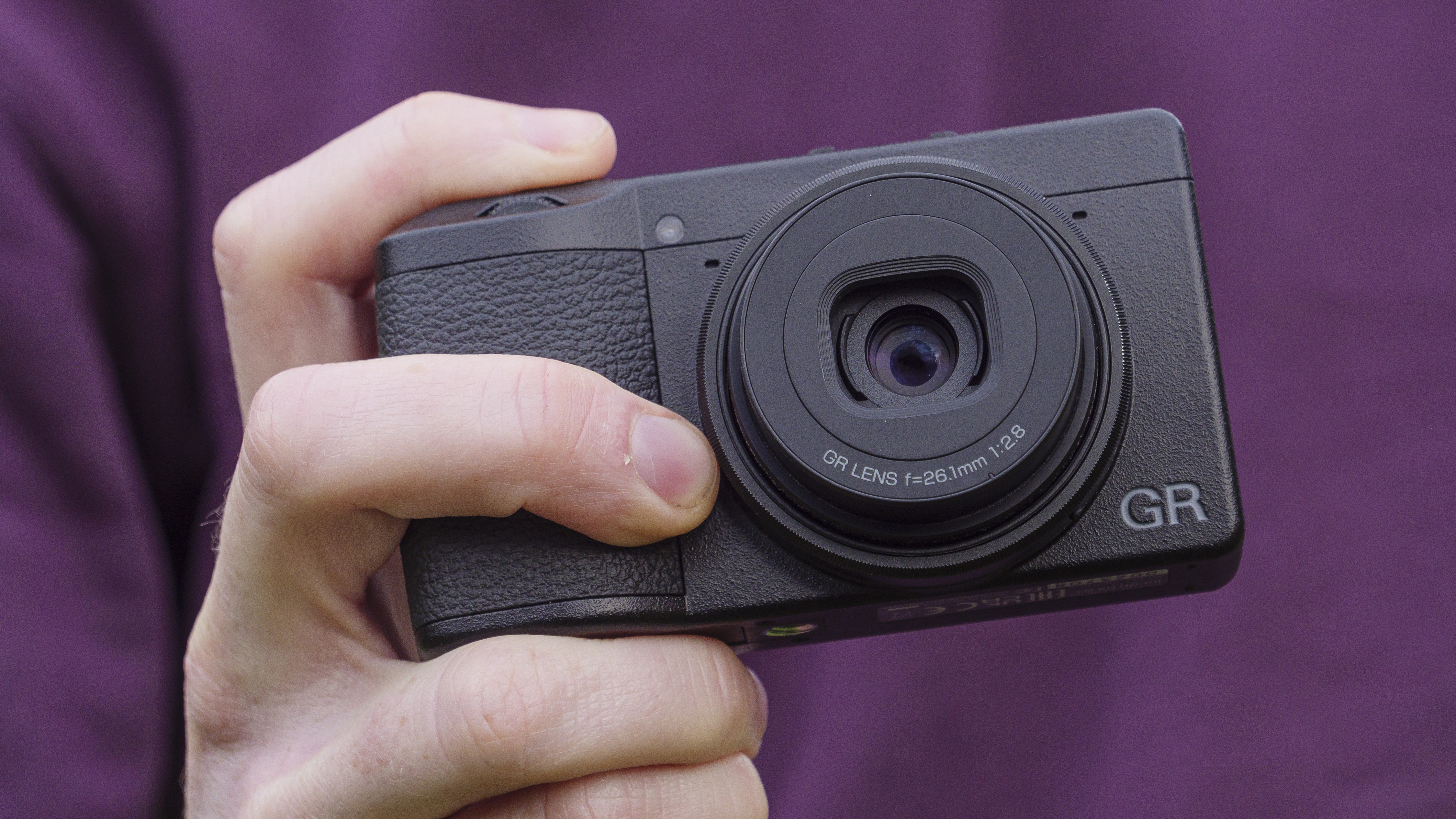
Watch out for the shooting mode dial, too – the lock isn't the strongest and we had a few times where the mode had switched between goes with the camera. On that dial is the usual PASM exposure modes, plus three user defined shooting modes (U1 to U3).
Custom shooting modes are super useful for those that take the time to create unique camera settings for specific scenarios, assigning a comprehensive range of settings, including Auto ISO with control over minimum acceptable shutter speed, and the Focus mode that includes the clever Snap Focus.
The fixed 3in LCD touchscreen is a little hard to view in bright daylight. Pump the 1.03-million-dot screen up to its brightest setting and things get a little clearer. There are a number of concessions made in order to keep the GR IIIx so small. If we were to able to make a single change it would be to have a flip-up screen which would be so handy for multi-angle shooting.
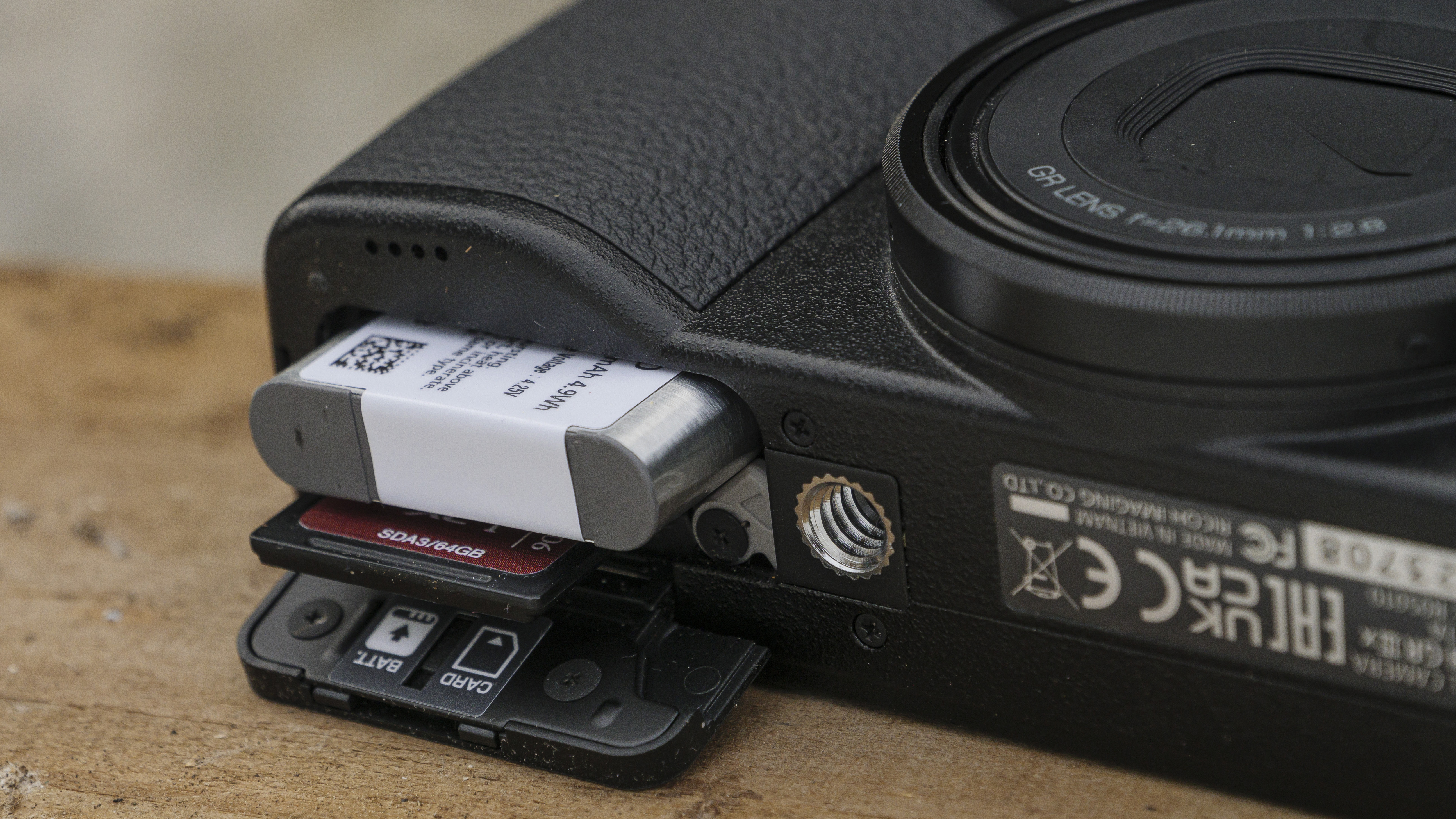
There's no denying that the 200-shot battery life is modest. Honestly, we didn't mind it and sometimes working within limitations – like a 36-roll of film – can be good practice. Also, the camera can be charged on-the-go via USB-C and additional DB-110 batteries can be picked up on the cheap.
For the lens ring cap, Ricoh has opted for style over substance. Rather than offer controls like manual focus or aperture (which we haven't necessarily pined for), the GR IIIx lens ring cap is functionless and can be swapped out with different color ring caps to personalize the camera.
After much time with the camera in and out the pocket, we started to feel that the protective lens cap could be a wise purchase to protect the front of the lens. The camera does, however, come with a basic wrist strap and a nice touch is that the GR IIIx has an internal memory of 2GB, which offers plenty of storage for pictures and Full HD videos. Beyond 2GB, you'll need a UHS-I SD memory card.
Ricoh GR IIIx: features and performance
- Quick start-up time
- Moderate continuous shooting
- Sensor-shift shake reduction
Ricoh has refined the GR III series to please experienced photographers who want a simple, customizable camera with a rapid response. Start-up time is lightning, the GR IIIx rattles off pictures from being powered off in less than a second, and with an immediate shutter response.
In continuous drive mode there's a moderate shooting rate of around 4fps by our estimate. For the raw DNG format, you'll get around ten shots before the camera slows right up, while in JPEG-only it's more like 150 shots. The GR IIIx is not an action camera, though it does respond quickly to capture decisive moments.
Focus modes include Snap Focus for a predetermined focus distance in half meter increments starting at one meter, or infinity. Handily, it is possible to temporarily override Snap Focus if it's set to the wrong distance via touch focus. Additional AF modes are available in the quick access menu.



Snap Focus is a different game with the new 40mm lens than it is with the GR III's 28mm lens, because depth of field is narrower and therefore less forgiving at any given aperture and working distance. You might not see on the small screen, but it is entirely possible to miss your focus point when shooting close up at f/2.8. Thankfully there is an on-screen depth of field indicator, through which you can check depth of field parameters.
For portraits close to camera and shallow depth of field work, it can be wiser to use pin-point touch autofocus rather than Snap Focus. The performance of other AF modes are only okay and, overall, less reliable – including a laggy and unreliable tracking AF plus average auto area AF.
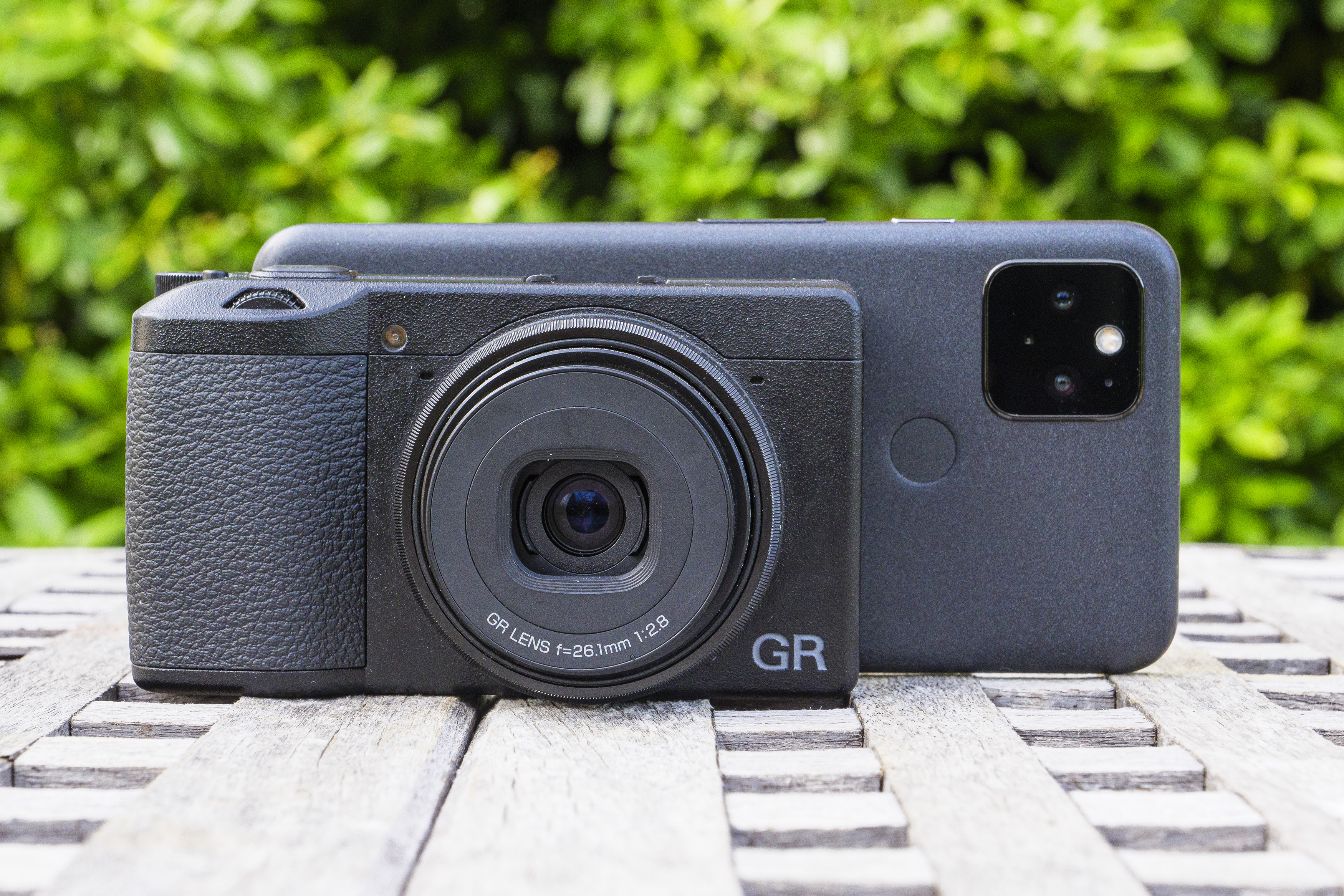
There's also a macro focus that reduces the minimum focus distance from 0.2m down to 0.12m. With the more telephoto 40mm lens, the macro mode feels more useable in the GR IIIx than it does the GR III – with a little cropping we've come away with some genuine-looking macro images.
The GR IIIx features a sensor-based shake reduction – a feature not found on aforementioned rivals. This opens up the GR III X to a wider range of handheld shooting scenarios and is perhaps even more useful than in the GR III with its more forgiving wider field of view lens.
With shake reduction active and a steady hand, we've been able get sharp shots every time at 1/10 sec and moderate success at 1/4 sec – that's two to three stops of reliable stabilization by our reckoning.
Ricoh GR IIIx: image quality
- 24.2MP raw DNGs
- 40mm f/2.8-16 lens
- In-camera raw editing
The GR IIIx has the same 24.2MP APS-C CMOS sensor as the GR III, recording in JPEG and raw DNG format. DNG is universally accepted on software old and new. There's a massive ISO 100-102,400 sensitivity range and it's entirely possible to shoot up to ISO 6,400 before noise rears its ugly head, even ISO 25,600 is acceptable. For properly clean images you'll prefer to stick between ISO 100 and 1,600.
The new 40mm f/2.8 lens has one more lens element than the 28mm f/2.8 (adding a mere 5g to the total weight of the camera), containing seven elements in five groups including two aspherical elements. Scanning from center to edges, image detail can be consistently sharp across the entire frame – impressive for such a compact lens – though you will lose critical sharpness at f/2.8 and f/16.







For subjects within a few meters of the camera (a working distance around 1.5m is a sweet spot), it is completely possible to get a pleasing shallow depth of field when shooting wide open at f/2.8, making the GR III X an excellent option for portraits that feature surroundings. Bokeh is pleasant enough, too, and particularly silky in the macro mode. Set to macro and using the crop mode, the GR IIIx has surprised us with its macro prowess.
Where lens corrections have not been applied to raw DNGs, vignetting is quite pronounced at f/2.8 and never really goes away at any aperture, though the improvement is pretty obvious by stopping down to f/3.5. The GR IIIx offers in-camera peripheral illumination correction that removes vignetting at the image capture stage or via raw development afterwards.


Evaluative metering does a solid job of getting a good all-round exposure, though in daylight we often opted to use highlight-weighted metering to protect highlights and, where the results are too dark, boost the exposure via exposure compensation.
There's also shadow correction and exposure compensation ±1EV in raw development for further tweaks. Somehow the GR IIIx encourages a low-key feel as a starting point to daylight images.
Ricoh offers the 'Image Sync' app for remote capture and transferring images onto a smartphone via Bluetooth or Wi-Fi. In our experience with a Google Pixel, everything worked fine and encouraged a practice of regularly sharing edited pictures on the fly.







We kept the picture style in the user mode to standard because of how easy it is to apply those kinds of changes via in-camera raw development. All picture styles can be customized, and we particularly like the Hard Monotone profile.
The GR IIIx focuses on photographers over those who do video. Resolution is limited to Full HD and there's no mic input for recording sound externally directly to the camera. However, frame rates do go up to 60p, meaning you can get slo-mo half-speed videos on the go, plus you get an organic shallow depth of field at f/2.8 that make videos stand out over using a phone.
Should I buy the Ricoh GR IIIx?
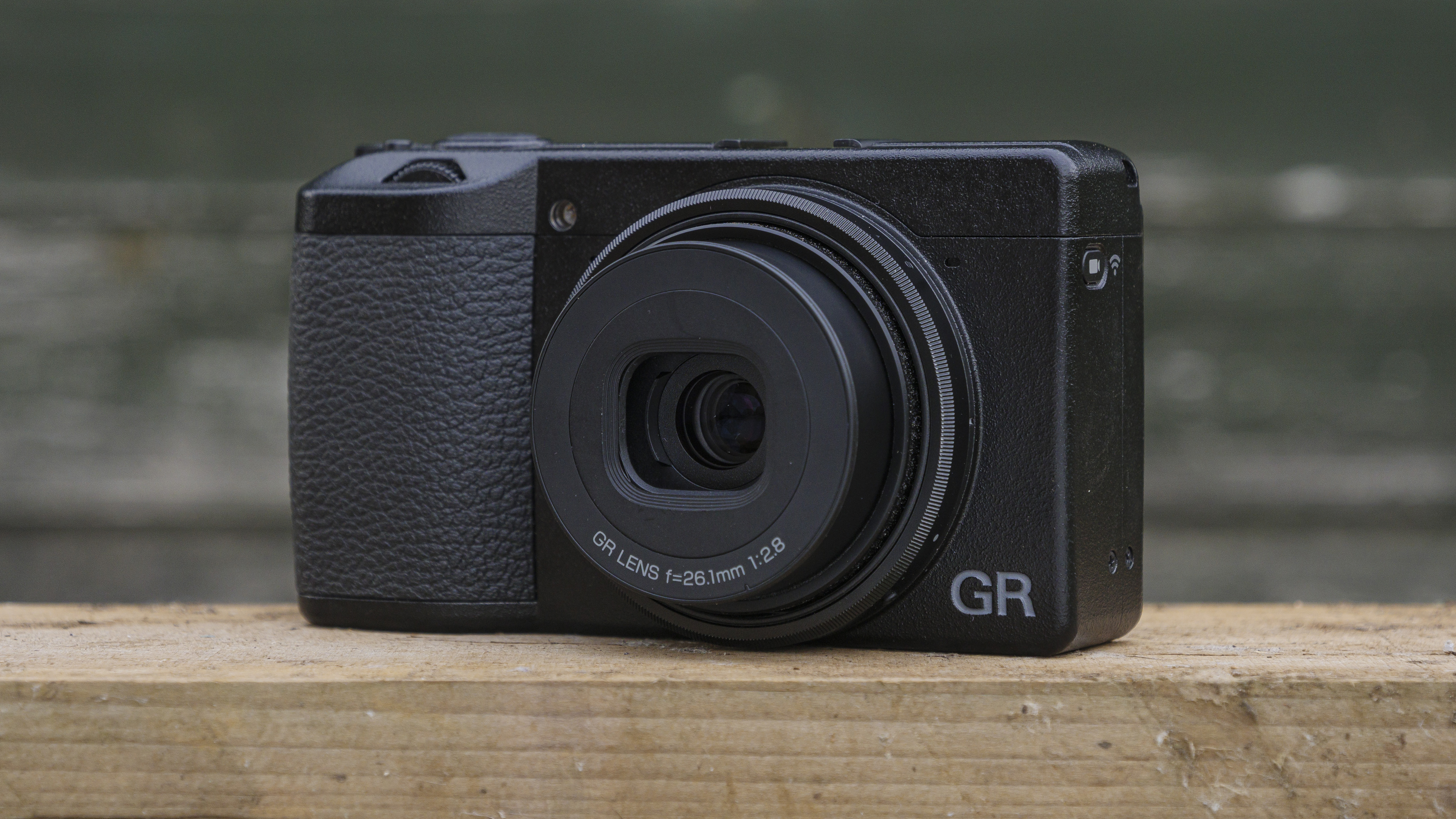
Buy it if...
You want a fun pocket camera
Small enough to slip in the pocket, quick to use, intuitive and customizable handling that seems to know what experienced photographers need, the GR IIIx is point-and-shoot happiness that you want to use everyday.
28mm is too wide for you
An obvious point to make, but the 40mm focal length in the GR IIIx gives a different experience to the 28mm lens in the GR III. You may already know which focal length you prefer in general, but arguably 40mm is more versatile, because in addition to general scenery you'll be able to get decent environmental portraits with a reasonable control over depth of field.
You want to develop your creative eye
With the limitation of its fixed focal length lens, exposure tools and a wide range of in-camera edits, we found the GR III X encourages a way of seeing, shooting and editing images. Having a camera to hand, getting to know it and using it regularly is such a great practice for photographers.
Don't buy it if...
You want a versatile camera
The GR IIIx is as niche as they come. Fixed lens, fixed focal length, modest video recording. This is a camera aimed at a certain type of photographer. It lacks many of the features we take for granted now in similar cameras, plus there's no built-in flash and the touch screen is fixed.
You want bang for buck
The Ricoh GR IIIx feels pricy considering its features and the alternatives. There are fantastic smartphones like the iPhone 13 Pro and APS-C interchangeable lens cameras like the Fuji X-E3 with 28mm f/2.8 pancake lens for the same outlay.
You shoot video a lot
Tech-wise, the GR IIx is way behind today's smartphones for video recording, being limited to Full HD resolution and mono in-camera audio.

Tim is the Cameras editor at TechRadar. He has enjoyed more than 15 years in the photo video industry with most of those in the world of tech journalism. During his time as Deputy Technical Editor with Amateur Photographer, as a freelancer and consequently editor at Tech Radar, Tim has developed a deeply technical knowledge and practical experience with cameras, educating others through news, reviews and features. He’s also worked in video production for Studio 44 with clients including Canon, and volunteers his spare time to consult a non-profit, diverse stories team based in Nairobi. Tim is curious, a keen creative, avid footballer and runner, and moderate flat white drinker who has lived in Kenya and believes we have much to enjoy and learn from each other.
